Latin Name: Hydrangea macrophylla
Common Name: big leaf hydrangea, mophead hydrangea
Family: Hydrangeaceae
Origin: China, Korea, Japan
Tree/Shrub/Herb: Deciduous shrub
Form: Rounded
Habit: Multi-stemmed
Buds: Opposite, decussately arranged, single terminal bud
Leaves: Ovate, pointed apex, toothed margin
Flowers: Globose corymb, blue/pink flowers, 4 bracts, 5 small petals
Stem/Bark: Exfoliating bark
Cultural Requirements: Moist rich soil, dislike dry soil and heat, semi-shade
Landscape Uses: Occupying large spaces, fall colour
Notes: Grows to 2-3m tall and wide
Latin Name: Hydrangea paniculata
Common Name: peegee hydrangea
Family: Hydrangeaceae
Origin: China, Korea, Japan
Tree/Shrub/Herb: Deciduous shrub
Form: Rounded
Habit: Multi-stemmed
Buds: Arranged in 3s, whorled
Leaves: Ovate, pointed apex, toothed margin
Flowers: Globose corymb, white/pink flowers, 4 bracts, 5 small petals
Stem/Bark: Reddish stems
Cultural Requirements: Moist rich soil, dislike dry soil and heat, semi-shade
Landscape Uses: Occupying large spaces, fall colour
Notes: Can grow to 20ft high or more
Latin Name: Hydrangea quercifolia
Common Name: oak leaf hydrangea
Family: Hydrangeaceae
Origin: Eastern US
Tree/Shrub/Herb: Deciduous shrub
Form: Broad
Habit: Multi-stemmed
Buds: Opposite or whorled
Leaves: Lobed, serrated, "oak shape", prominent drip tips
Flowers: Pannicles, white
Stem/Bark: Cinnamon coloured bark
Cultural Requirements: Dryer and leaner soils than the above hydrangeas, enjoys sun
Landscape Uses: Occupying large spaces
Notes: Provides interesting fall colouring
Latin Name: Parthenocissus tricuspidata
Common Name: Boston ivy
Family: Vitaceae
Origin: China, Korea, Japan
Tree/Shrub/Herb: Woody climber (liana)
Form: Flattened
Habit: Climbing with sticky tendrils
Buds: Alternate
Leaves: Tri-lobed, toothed, palmate, simple
Cultural Requirements: Won't grow in poorly drained/wet soil, but will grow mostly anywhere else
Landscape Uses: Wall covering
Notes: Will not cause any significant damage to any surfaces it climbs
Latin Name: Parthenocissus quinquefolia
Common Name: Virginia creeper
Family: Vitaceae
Origin: Eastern US
Tree/Shrub/Herb: Woody climber (liana)
Form: Cascading
Habit: Climbing with sticky tendrils
Buds: Alternate
Leaves: Palmately compound with 5 leaflets, toothed margin
Flowers: Corymbose raceme infloresence
Fruit: Purple berries
Cultural Requirements: Hardy, prefers moist, well drained soil
Landscape Uses: Wall covering
Notes: Has an attractive fall colour
Latin Name: Quercus robur
Common Name: English oak
Family: Fagaceae
Origin: Europe
Tree/Shrub/Herb: Deciduous tree
Form: Upright, rounded
Habit: Dominant leader, multi-branched
Buds: Alternate, multiple terminal buds, brown, ovoid
Leaves: Rounded lobes, typical oak shape, cluster towards ends of branches
Fruit: Acorns
Stem/Bark: Brown bark, distinct vertical furrows
Cultural Requirements: Will tolerate most well drained soils
Landscape Uses: Street and park trees
Notes: Can grow to be upwards of 2000 years old
Latin Name: Aesculus hippocastanum
Common Name: horse chestnut
Family: Sapindaceae
Origin: Eastern Europe
Tree/Shrub/Herb: Deciduous tree
Form: Upright, rounded
Habit: Multi-branched
Buds: Opposite, very large, sticky, brown, multiple terminal buds
Leaves: Palmately compound, 5 leaflets, lanceolate, serrated
Fruit: Large brown single seed in spiky capsule
Stem/Bark: Grey/brown bark, platy furrows
Cultural Requirements: Any well drained soil
Landscape Uses: Street and park trees
Notes: Display horseshoe shaped leaf scars
Latin Name: Cotinus coggygria
Common Name: purple smokebush
Family: Anacardiaceae
Origin: Southern Europe
Tree/Shrub/Herb: Herbaceous shrub
Form: Upright, rounded
Habit: Multi stems from near base
Buds: Alternate, single terminal bud
Leaves: Purple, rounded, entire margin
Flowers: Panniculate, white
Stem/Bark: Light brown, platy bark
Cultural Requirements: Draught tolerant, will do well in dry soil
Landscape Uses: Foliage colour
Notes: Can be easily identified by whispy pannicle flowers
Latin Name: Quercus rubra
Common Name: red oak
Family: Fagaceae
Origin: Eastern North America
Tree/Shrub/Herb: Deciduous tree
Form: Upright, rounded
Habit: Dominant leader, multi-branched
Buds: Alternate, multiple terminal buds
Leaves: Pointed lobes, acute apex, moderate negative lobe space
Fruit: Acorns
Stem/Bark: Greyish bark, moderately furrowed
Cultural Requirements: Will tolerate most well drained soils
Landscape Uses: Parks and street trees
Notes: European oaks have rounded lobes, North American oaks have pointed lobes
Latin Name: Acer palmatum
Common Name: Japanese maple
Family: Sapindaceae
Origin: Japan, Korea, E. China
Tree/Shrub/Herb: Deciduous tree
Form: Upright, spreading
Habit: Vaselike
Buds: Opposite, twin terminal buds, partially concealed by petioles
Leaves: 5 lobed leaves, toothed margin, palmate
Fruit: Twin samaras
Stem/Bark: Striations on bark, greyish/brown
Cultural Requirements: Moist, well drained soil
Landscape Uses: Park and garden trees
Notes: Produces "shoot style" new growth
Latin Name: Euonymus fortunei
Common Name: Euonymus
Family: Celastraceae
Origin: East Asia
Tree/Shrub/Herb: Broadleaf evergreen shrub
Form: Matlike
Habit: Spreading, can climb
Buds: Opposite
Leaves: Small, ovate, lightly toothed, marginal variegation
Flowers: Unimportant flowers, grown for foliage
Stem/Bark: Aerial roots form on stems
Cultural Requirements: Average, moist, well drained soils; full sun to partial shade
Landscape Uses: Foliage, short ground-cover
Notes: This is a ubiquitous commercial landscaping plant
Latin Name: Abelia x grandiflora
Common Name: glossy abelia
Family: Caprifoliaceae
Origin: China/garden origin
Tree/Shrub/Herb: Semi-evergreen shrub
Form: Upright and rounded or arching shoots
Habit: Clump forming
Buds: Opposite
Leaves: Decussate, ovate, pointed apex, glossy coating, finely toothed
Flowers: Whitish/pink, tubular, 5 petals
Stem/Bark: Red stems
Cultural Requirements: Well drained soil, semi shade to full sun
Landscape Uses: Form and colour
Notes: Appearance will differ based on how closely the plant is pruned (will have an arching appearance if not heavily pruned)
Latin Name: Hydrangea aspera
Common Name: aspera
Family: Hydrangeaceae
Origin: Himalayas, China, Taiwan
Tree/Shrub/Herb: Deciduous shrub
Form: Upright, rounded
Habit: Clump forming
Buds: Opposite
Leaves: Tomentose, toothed margin
Flowers: Pink pannicles, fertile inner flowers surrounded by infertile outer flowers
Stem/Bark: Red stems
Cultural Requirements: Moist soil to moderately wet, full shade to semi shade
Landscape Uses: Form and colour
Notes: Can be 12-15ft tall
Latin Name: Berberis thunbergii
Common Name: Japanese barberry
Family: Berberidaceae
Origin: Japan
Tree/Shrub/Herb: Deciduous shrub
Form: Upright, round
Habit: Loosely arching stems
Buds: Alternate
Leaves: Whorled at nodes, purple, spatulate
Flowers: Yellow flowers
Fruit: Red, oval berries
Stem/Bark: Spiny stems, reddish bark with yellow striations
Cultural Requirements: Very hardy, draught tolerant, don't like wet soils
Landscape Uses: Used in landscaping for protection because of spiny stems
Notes: Attractive red fall colour
Latin Name: Spiraea japonica
Common Name: Japanese spirea
Family: Rosaceae
Origin: China, Japan, Korea
Tree/Shrub/Herb: Deciduous shrub
Form: Tightly rounded
Habit: Unbranched shoots from base
Buds: Alternate
Leaves: Serrated margin, pointed apex
Flowers: Corymbose raceme, pink
Stem/Bark: Red stems
Cultural Requirements: Nearly any soil, needs irrigation
Landscape Uses: Form and colour
Notes: Flowers in August
Latin Name: Styrax japonicus
Common Name: Japanese snowbell
Family: Styracaceae
Origin: China, Korea, Japan
Tree/Shrub/Herb: Deciduous tree
Form: Upright, rounded
Habit: Light to moderate foliage density, twigs have zig-zag habit
Buds: Alternate, single terminal bud
Leaves: Lightly toothed, pointed apex
Flowers: Bell shaped, white, flowers in June
Fruit: Globular pale green fruit with single seed
Stem/Bark: Greyish brown bark with vertical striations
Cultural Requirements: Moist, well drained organic soil; sun loving
Landscape Uses: Garden tree
Notes: Susceptible to verticilium wilt
Latin Name: Wisteria floribunda
Common Name: Japanese wisteria
Family: Fabaceae
Origin: Japan
Tree/Shrub/Herb: Deciduous liana
Form: Flattened
Habit: Climbing with tendrils
Buds: Alternate
Leaves: Pinnately compound with 9-13 leaflets, pointed apex
Flowers: Pendulous raceme, purple to white
Stem/Bark: Brownish woody stem
Cultural Requirements: Very hardy, will grow in dry soil, sun loving
Landscape Uses: Covering vertical surfaces
Notes: Tendrils wrap clockwise, flowers in late May
Latin Name: Wisteria sinensis
Common Name: Chinese wisteria
Family: Fabaceae
Origin: China
Tree/Shrub/Herb: Deciduous liana
Form: Flattened
Habit: Climbing with tendrils
Buds: Alternate
Leaves: Pinnately compound with 9-13 leaflets, pointed apex
Flowers: Pendulous raceme, white to purple
Stem/Bark: Brownish woody stem
Cultural Requirements: Very hardy, will grow in dry soil, sun loving
Landscape Uses: Covering vertical surfaces
Notes: Tendrils wrap counterclockwise, flowers in early May
Latin Name: Vitus coignetiae
Common Name: Japanese glory vine
Family: Vitaceae
Origin: Japan
Tree/Shrub/Herb: Deciduous liana
Form: Flattened
Habit: Climbing with tendrils
Buds: Alternate
Leaves: Simple, round shape, toothed margin, red petiole
Fruit: Rarely produces fruit
Stem/Bark: Brown bark which peels in strips
Cultural Requirements: Hardy, needs drainage and sun
Landscape Uses: Covering vertical surfaces
Notes: Has an attractive fall colour
Latin Name: Euonymus alatus
Common Name: winged burning bush
Family: Celastraceae
Origin: China, Japan, Korea
Tree/Shrub/Herb: Deciduous shrub
Form: Upright, regular and round
Habit: Layered secondary branches
Buds: Opposite, multiple terminal buds
Leaves: Deccusate, lanceolate, pointed apex
Flowers: Insignificant flowers
Fruit: Red, berry-like arils
Stem/Bark: Green, corky stems with 4 brown strips along their length
Cultural Requirements: Average soils
Landscape Uses: Border shrub
Notes: "Wings" along stems are a key identification feature
Common Name: big leaf hydrangea, mophead hydrangea
Family: Hydrangeaceae
Origin: China, Korea, Japan
Tree/Shrub/Herb: Deciduous shrub
Form: Rounded
Habit: Multi-stemmed
Buds: Opposite, decussately arranged, single terminal bud
Leaves: Ovate, pointed apex, toothed margin
Flowers: Globose corymb, blue/pink flowers, 4 bracts, 5 small petals
Stem/Bark: Exfoliating bark
Cultural Requirements: Moist rich soil, dislike dry soil and heat, semi-shade
Landscape Uses: Occupying large spaces, fall colour
Notes: Grows to 2-3m tall and wide
Latin Name: Hydrangea paniculata
Common Name: peegee hydrangea
Family: Hydrangeaceae
Origin: China, Korea, Japan
Tree/Shrub/Herb: Deciduous shrub
Form: Rounded
Habit: Multi-stemmed
Buds: Arranged in 3s, whorled
Leaves: Ovate, pointed apex, toothed margin
Flowers: Globose corymb, white/pink flowers, 4 bracts, 5 small petals
Stem/Bark: Reddish stems
Cultural Requirements: Moist rich soil, dislike dry soil and heat, semi-shade
Landscape Uses: Occupying large spaces, fall colour
Notes: Can grow to 20ft high or more
Latin Name: Hydrangea quercifolia
Common Name: oak leaf hydrangea
Family: Hydrangeaceae
Origin: Eastern US
Tree/Shrub/Herb: Deciduous shrub
Form: Broad
Habit: Multi-stemmed
Buds: Opposite or whorled
Leaves: Lobed, serrated, "oak shape", prominent drip tips
Flowers: Pannicles, white
Stem/Bark: Cinnamon coloured bark
Cultural Requirements: Dryer and leaner soils than the above hydrangeas, enjoys sun
Landscape Uses: Occupying large spaces
Notes: Provides interesting fall colouring
Latin Name: Parthenocissus tricuspidata
Common Name: Boston ivy
Family: Vitaceae
Origin: China, Korea, Japan
Tree/Shrub/Herb: Woody climber (liana)
Form: Flattened
Habit: Climbing with sticky tendrils
Buds: Alternate
Leaves: Tri-lobed, toothed, palmate, simple
Cultural Requirements: Won't grow in poorly drained/wet soil, but will grow mostly anywhere else
Landscape Uses: Wall covering
Notes: Will not cause any significant damage to any surfaces it climbs
Latin Name: Parthenocissus quinquefolia
Common Name: Virginia creeper
Family: Vitaceae
Origin: Eastern US
Tree/Shrub/Herb: Woody climber (liana)
Form: Cascading
Habit: Climbing with sticky tendrils
Buds: Alternate
Leaves: Palmately compound with 5 leaflets, toothed margin
Flowers: Corymbose raceme infloresence
Fruit: Purple berries
Cultural Requirements: Hardy, prefers moist, well drained soil
Landscape Uses: Wall covering
Notes: Has an attractive fall colour
Latin Name: Quercus robur
Common Name: English oak
Family: Fagaceae
Origin: Europe
Tree/Shrub/Herb: Deciduous tree
Form: Upright, rounded
Habit: Dominant leader, multi-branched
Buds: Alternate, multiple terminal buds, brown, ovoid
Leaves: Rounded lobes, typical oak shape, cluster towards ends of branches
Fruit: Acorns
Stem/Bark: Brown bark, distinct vertical furrows
Cultural Requirements: Will tolerate most well drained soils
Landscape Uses: Street and park trees
Notes: Can grow to be upwards of 2000 years old
Latin Name: Aesculus hippocastanum
Common Name: horse chestnut
Family: Sapindaceae
Origin: Eastern Europe
Tree/Shrub/Herb: Deciduous tree
Form: Upright, rounded
Habit: Multi-branched
Buds: Opposite, very large, sticky, brown, multiple terminal buds
Leaves: Palmately compound, 5 leaflets, lanceolate, serrated
Fruit: Large brown single seed in spiky capsule
Stem/Bark: Grey/brown bark, platy furrows
Cultural Requirements: Any well drained soil
Landscape Uses: Street and park trees
Notes: Display horseshoe shaped leaf scars
Latin Name: Cotinus coggygria
Common Name: purple smokebush
Family: Anacardiaceae
Origin: Southern Europe
Tree/Shrub/Herb: Herbaceous shrub
Form: Upright, rounded
Habit: Multi stems from near base
Buds: Alternate, single terminal bud
Leaves: Purple, rounded, entire margin
Flowers: Panniculate, white
Stem/Bark: Light brown, platy bark
Cultural Requirements: Draught tolerant, will do well in dry soil
Landscape Uses: Foliage colour
Notes: Can be easily identified by whispy pannicle flowers
Latin Name: Quercus rubra
Common Name: red oak
Family: Fagaceae
Origin: Eastern North America
Tree/Shrub/Herb: Deciduous tree
Form: Upright, rounded
Habit: Dominant leader, multi-branched
Buds: Alternate, multiple terminal buds
Leaves: Pointed lobes, acute apex, moderate negative lobe space
Fruit: Acorns
Stem/Bark: Greyish bark, moderately furrowed
Cultural Requirements: Will tolerate most well drained soils
Landscape Uses: Parks and street trees
Notes: European oaks have rounded lobes, North American oaks have pointed lobes
Latin Name: Acer palmatum
Common Name: Japanese maple
Family: Sapindaceae
Origin: Japan, Korea, E. China
Tree/Shrub/Herb: Deciduous tree
Form: Upright, spreading
Habit: Vaselike
Buds: Opposite, twin terminal buds, partially concealed by petioles
Leaves: 5 lobed leaves, toothed margin, palmate
Fruit: Twin samaras
Stem/Bark: Striations on bark, greyish/brown
Cultural Requirements: Moist, well drained soil
Landscape Uses: Park and garden trees
Notes: Produces "shoot style" new growth
Latin Name: Euonymus fortunei
Common Name: Euonymus
Family: Celastraceae
Origin: East Asia
Tree/Shrub/Herb: Broadleaf evergreen shrub
Form: Matlike
Habit: Spreading, can climb
Buds: Opposite
Leaves: Small, ovate, lightly toothed, marginal variegation
Flowers: Unimportant flowers, grown for foliage
Stem/Bark: Aerial roots form on stems
Cultural Requirements: Average, moist, well drained soils; full sun to partial shade
Landscape Uses: Foliage, short ground-cover
Notes: This is a ubiquitous commercial landscaping plant
Latin Name: Abelia x grandiflora
Common Name: glossy abelia
Family: Caprifoliaceae
Origin: China/garden origin
Tree/Shrub/Herb: Semi-evergreen shrub
Form: Upright and rounded or arching shoots
Habit: Clump forming
Buds: Opposite
Leaves: Decussate, ovate, pointed apex, glossy coating, finely toothed
Flowers: Whitish/pink, tubular, 5 petals
Stem/Bark: Red stems
Cultural Requirements: Well drained soil, semi shade to full sun
Landscape Uses: Form and colour
Notes: Appearance will differ based on how closely the plant is pruned (will have an arching appearance if not heavily pruned)
Latin Name: Hydrangea aspera
Common Name: aspera
Family: Hydrangeaceae
Origin: Himalayas, China, Taiwan
Tree/Shrub/Herb: Deciduous shrub
Form: Upright, rounded
Habit: Clump forming
Buds: Opposite
Leaves: Tomentose, toothed margin
Flowers: Pink pannicles, fertile inner flowers surrounded by infertile outer flowers
Stem/Bark: Red stems
Cultural Requirements: Moist soil to moderately wet, full shade to semi shade
Landscape Uses: Form and colour
Notes: Can be 12-15ft tall
Latin Name: Berberis thunbergii
Common Name: Japanese barberry
Family: Berberidaceae
Origin: Japan
Tree/Shrub/Herb: Deciduous shrub
Form: Upright, round
Habit: Loosely arching stems
Buds: Alternate
Leaves: Whorled at nodes, purple, spatulate
Flowers: Yellow flowers
Fruit: Red, oval berries
Stem/Bark: Spiny stems, reddish bark with yellow striations
Cultural Requirements: Very hardy, draught tolerant, don't like wet soils
Landscape Uses: Used in landscaping for protection because of spiny stems
Notes: Attractive red fall colour
Latin Name: Spiraea japonica
Common Name: Japanese spirea
Family: Rosaceae
Origin: China, Japan, Korea
Tree/Shrub/Herb: Deciduous shrub
Form: Tightly rounded
Habit: Unbranched shoots from base
Buds: Alternate
Leaves: Serrated margin, pointed apex
Flowers: Corymbose raceme, pink
Stem/Bark: Red stems
Cultural Requirements: Nearly any soil, needs irrigation
Landscape Uses: Form and colour
Notes: Flowers in August
Latin Name: Styrax japonicus
Common Name: Japanese snowbell
Family: Styracaceae
Origin: China, Korea, Japan
Tree/Shrub/Herb: Deciduous tree
Form: Upright, rounded
Habit: Light to moderate foliage density, twigs have zig-zag habit
Buds: Alternate, single terminal bud
Leaves: Lightly toothed, pointed apex
Flowers: Bell shaped, white, flowers in June
Fruit: Globular pale green fruit with single seed
Stem/Bark: Greyish brown bark with vertical striations
Cultural Requirements: Moist, well drained organic soil; sun loving
Landscape Uses: Garden tree
Notes: Susceptible to verticilium wilt
Latin Name: Wisteria floribunda
Common Name: Japanese wisteria
Family: Fabaceae
Origin: Japan
Tree/Shrub/Herb: Deciduous liana
Form: Flattened
Habit: Climbing with tendrils
Buds: Alternate
Leaves: Pinnately compound with 9-13 leaflets, pointed apex
Flowers: Pendulous raceme, purple to white
Stem/Bark: Brownish woody stem
Cultural Requirements: Very hardy, will grow in dry soil, sun loving
Landscape Uses: Covering vertical surfaces
Notes: Tendrils wrap clockwise, flowers in late May
Latin Name: Wisteria sinensis
Common Name: Chinese wisteria
Family: Fabaceae
Origin: China
Tree/Shrub/Herb: Deciduous liana
Form: Flattened
Habit: Climbing with tendrils
Buds: Alternate
Leaves: Pinnately compound with 9-13 leaflets, pointed apex
Flowers: Pendulous raceme, white to purple
Stem/Bark: Brownish woody stem
Cultural Requirements: Very hardy, will grow in dry soil, sun loving
Landscape Uses: Covering vertical surfaces
Notes: Tendrils wrap counterclockwise, flowers in early May
Latin Name: Vitus coignetiae
Common Name: Japanese glory vine
Family: Vitaceae
Origin: Japan
Tree/Shrub/Herb: Deciduous liana
Form: Flattened
Habit: Climbing with tendrils
Buds: Alternate
Leaves: Simple, round shape, toothed margin, red petiole
Fruit: Rarely produces fruit
Stem/Bark: Brown bark which peels in strips
Cultural Requirements: Hardy, needs drainage and sun
Landscape Uses: Covering vertical surfaces
Notes: Has an attractive fall colour
Latin Name: Euonymus alatus
Common Name: winged burning bush
Family: Celastraceae
Origin: China, Japan, Korea
Tree/Shrub/Herb: Deciduous shrub
Form: Upright, regular and round
Habit: Layered secondary branches
Buds: Opposite, multiple terminal buds
Leaves: Deccusate, lanceolate, pointed apex
Flowers: Insignificant flowers
Fruit: Red, berry-like arils
Stem/Bark: Green, corky stems with 4 brown strips along their length
Cultural Requirements: Average soils
Landscape Uses: Border shrub
Notes: "Wings" along stems are a key identification feature
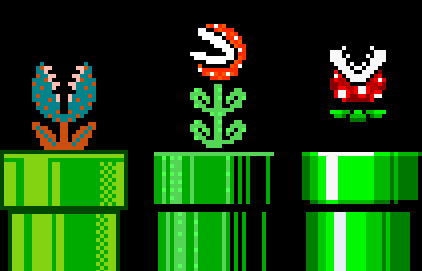

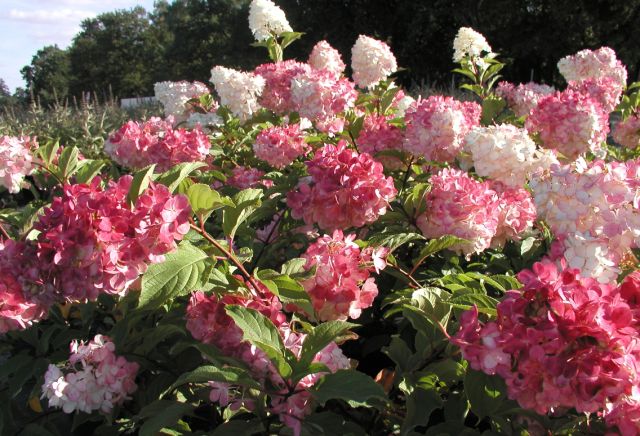







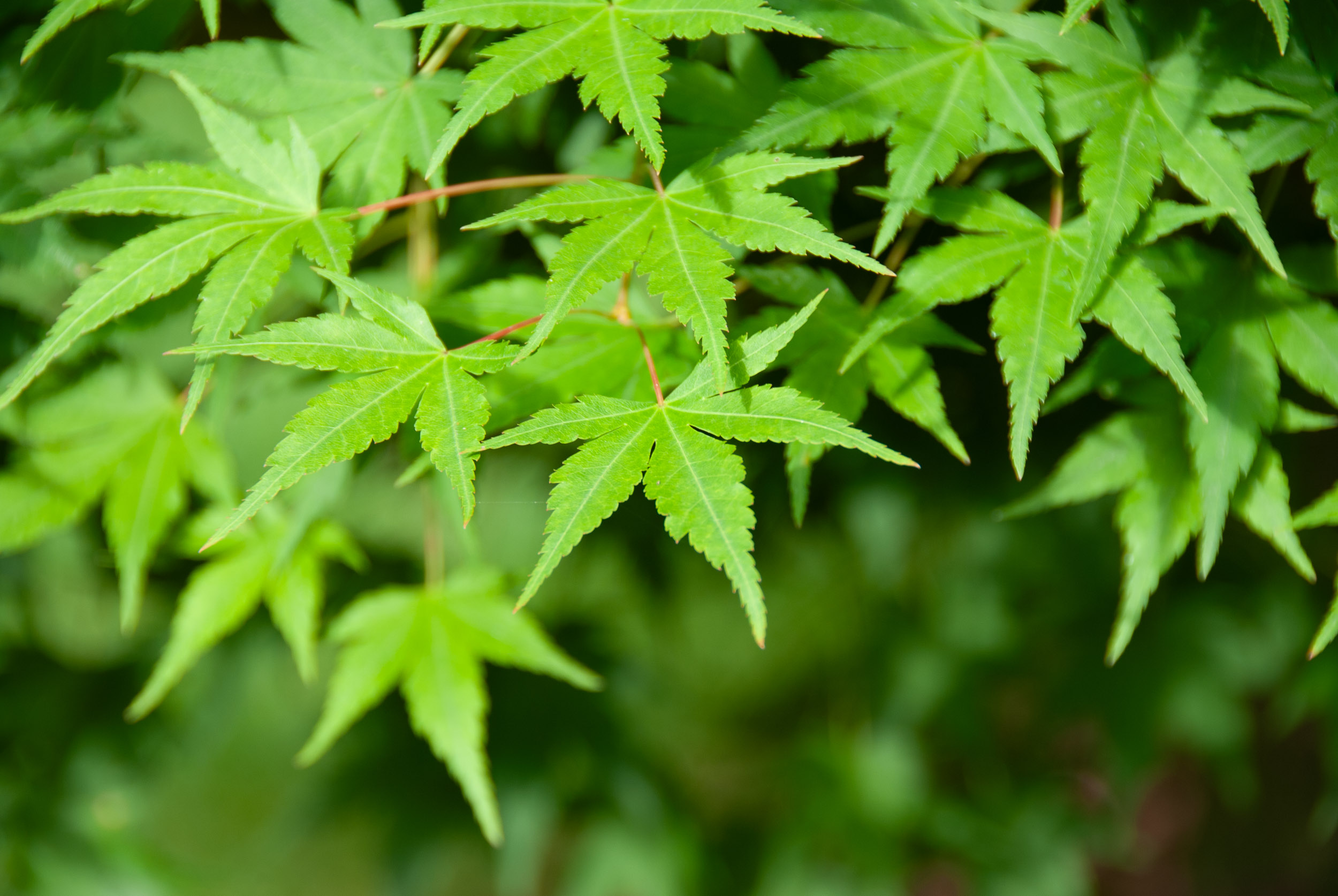







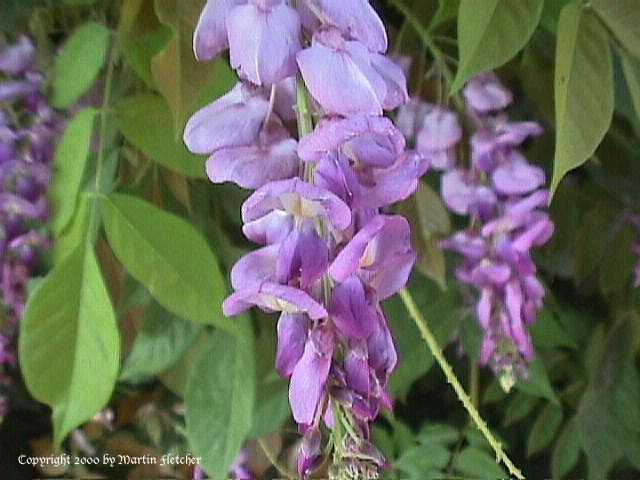
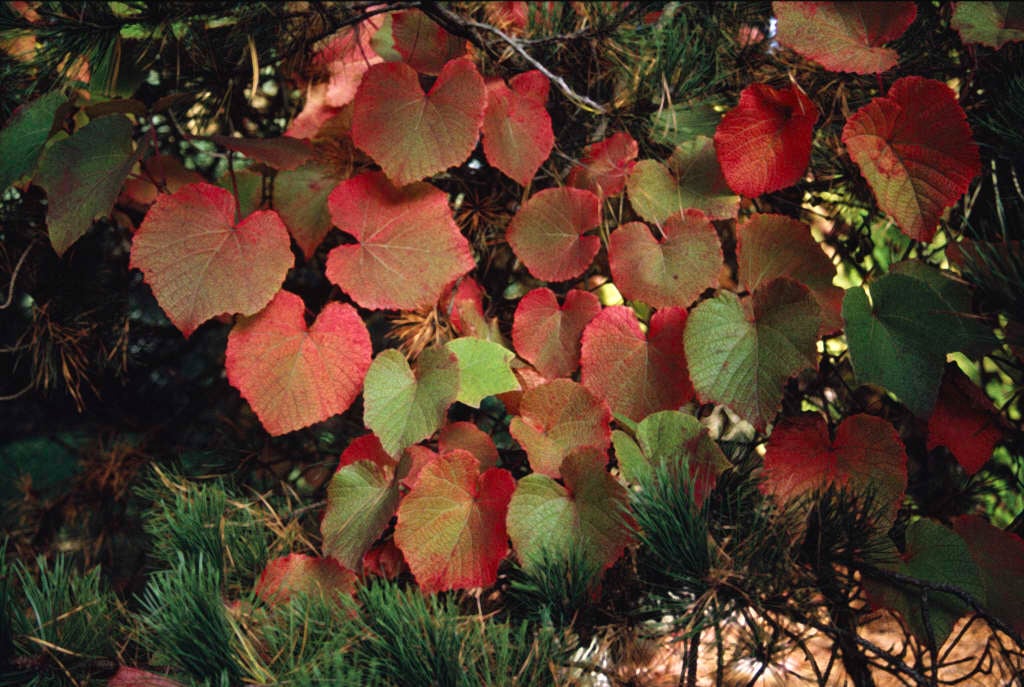

No comments:
Post a Comment